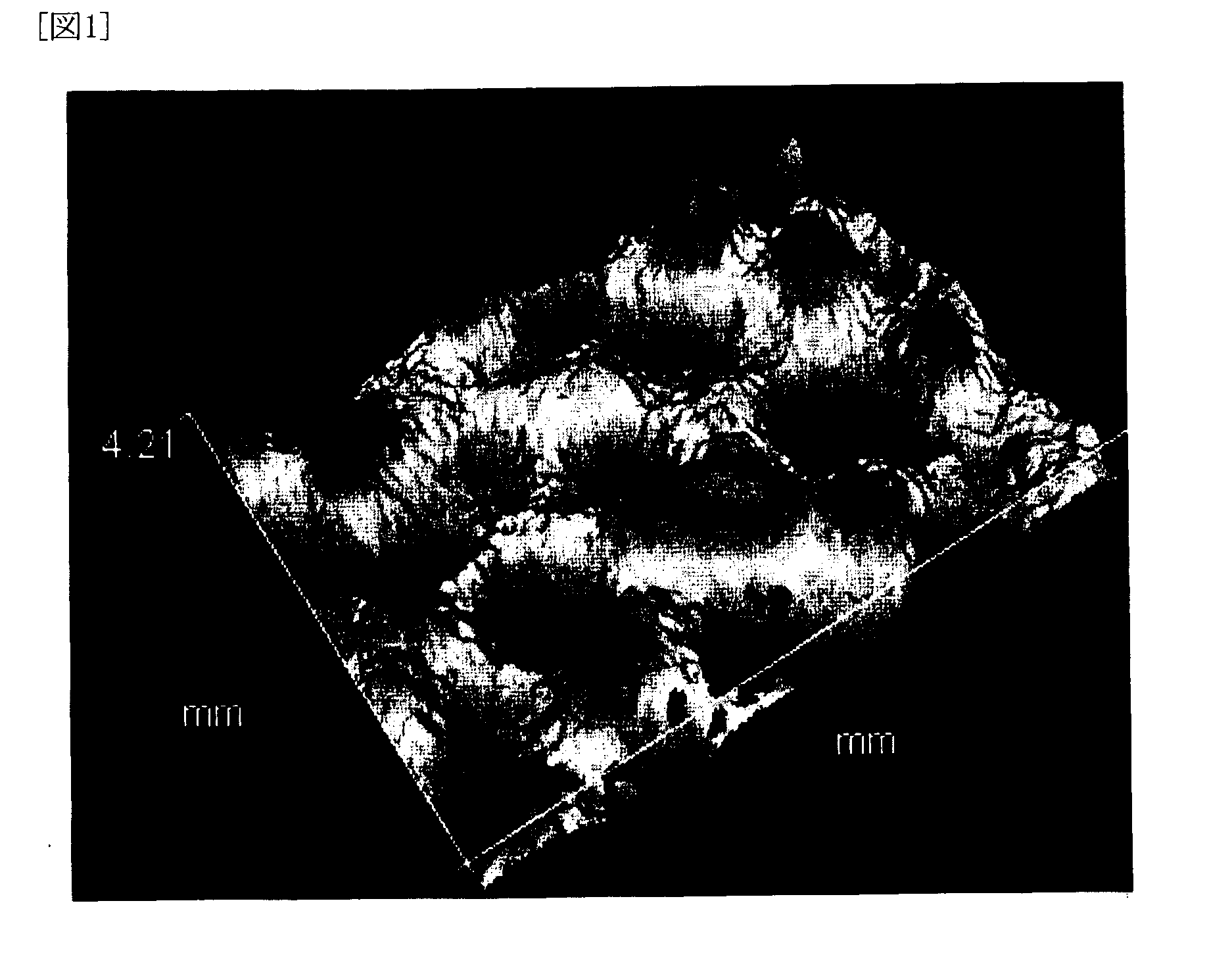Polyolefin microporous membrane
a polyolefin microporous membrane and polyolefin microporous membrane technology, applied in the field of microporous membranes, can solve the problems of deteriorating inability to provide inexpensive batteries, and difficulty in raising the capacity further by using, so as to improve the cycle performance of the battery, improve the oxidation resistance of the polyolefin microporous membrane, and improve the oxidation resistan
- Summary
- Abstract
- Description
- Claims
- Application Information
AI Technical Summary
Benefits of technology
Problems solved by technology
Method used
Image
Examples
example 1
[0136]In a tumbler blender, 95 wt. % of a polyethylene homopolymer having Mv of 250000 and 5 wt. % of a polypropylene homopolymer having Mv of 400000 were dry blended. To 99 wt. % of the pure polymer mixture thus obtained was added 1 wt. % of pentaerythrityl-tetrakis-[3-(3,5-di-t-butyl-4-hydroxyphenyl)propionate] as an antioxidant, followed by dry-blending in the tumbler blender again to obtain a polymer-containing mixture. After the atmosphere was substituted with nitrogen, the polymer-containing mixture thus obtained was supplied to a twin-screw extruder in a nitrogen atmosphere by using a feeder. Liquid paraffin (having a viscoelasticity of 7.59×10−5 m2 / s at 37.78° C.) was injected into the cylinder of the extruder via a plunger pump. The first peak available at 10° C. / min by the DSC method, that is, a melting point of the pure polymer mixture, was 137.2° C.
[0137]The feeder and the pump were adjusted so that a liquid paraffin amount ratio in the total mixture to be extruded after...
example 2
[0144]In a tumbler blender, 47.5 wt. % of a polyethylene homopolymer having Mv of 700000, 47.5 wt. % of a polyethylene homopolymer having Mv of 250000, and 5 wt. % of a polypropylene homopolymer having Mv of 400000 were dry blended. To 99 wt. % of the pure polymer mixture thus obtained was added 1 wt. % of pentaerythrityl-tetrakis-[3-(3,5-di-t-butyl-4-hydroxyphenyl)propionate] as an antioxidant, followed by dry blending in the tumbler blender again to obtain a polymer-containing mixture. After the atmosphere was substituted with nitrogen, the obtained polymer-containing mixture was supplied to a twin-screw extruder in a nitrogen atmosphere by using a feeder. Liquid paraffin (having a viscoelasticity of 7.59×10−5 m2 / s at 37.78° C.) was injected into the cylinder of the extruder via a plunger pump.
[0145]The feeder and the pump were adjusted so that a liquid paraffin amount ratio in the total mixture to be extruded after melting and kneading became 65 wt. %. The melting and kneading we...
example 3
[0152]In the same manner as in Example 2 except that after the kneaded melt was extruded onto a cooling roll, the extrudate was cast by bank formation method, embossing was carried out under the following conditions, a biaxial orientation temperature was 118° C. and a thermal fixing temperature was 122° C. a polyolefin microporous membrane was prepared.
[0153]In the present example, the gel sheet was passed between two embossing rolls (roll 1 and roll 2) while adjusting a linear pressure between the rolls to 110 N / mm. The roll 1 and the roll 2 had each an outer diameter of 100 mm and an embossed pattern of diagonal lattices with a density of 64 meshes / inch and a depth of 0.102 mm. Their surface temperature was adjusted to 85° C.
[0154]With regard to the polyolefin microporous membrane thus obtained, various physical properties, battery performance, and electrolyte retention condition were evaluated and the evaluation results are shown in Table 1, while observation results of the shape...
PUM
| Property | Measurement | Unit |
|---|---|---|
| height | aaaaa | aaaaa |
| pore diameter | aaaaa | aaaaa |
| thickness | aaaaa | aaaaa |
Abstract
Description
Claims
Application Information
 Login to View More
Login to View More - R&D
- Intellectual Property
- Life Sciences
- Materials
- Tech Scout
- Unparalleled Data Quality
- Higher Quality Content
- 60% Fewer Hallucinations
Browse by: Latest US Patents, China's latest patents, Technical Efficacy Thesaurus, Application Domain, Technology Topic, Popular Technical Reports.
© 2025 PatSnap. All rights reserved.Legal|Privacy policy|Modern Slavery Act Transparency Statement|Sitemap|About US| Contact US: help@patsnap.com


